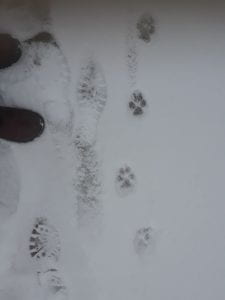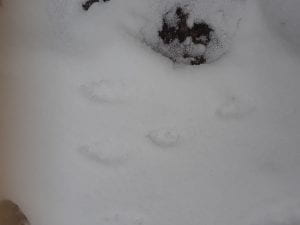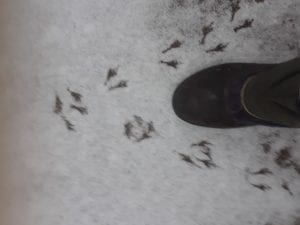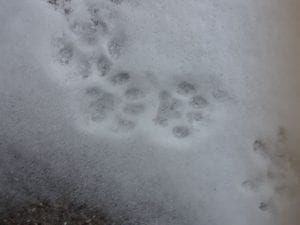Lots! Besides all the fun winter recreational activities that involve snow and ice (this does not include donuts on the freeway), they play an important role in our temperate (as opposed to tropical!) ecosystems.
A Cozy Blanket
Ok, so maybe not a warm and cozy blanket, but snow does provide a good layer of insulation for dormant plants and critters that may be active beneath the snow. The “subnivean zone” is where you might find small mammals like mice and voles, tunneling away in search of food while staying relatively safe from predators. If the overlying snow is deep and packed enough, temperatures can hover around freezing (32 F), keeping everything beneath protected from chilling winds and extreme temperature declines.
Ha Ha, You Can’t See Me Now!
Some animals actually change color with the seasons so they blend in with their background better. This camouflage can serve both prey – such as snowshoe hares and rock ptarmigans – and predators, like the arctic fox and stoat. Some of these animals have been prized for their snowy white fur, which has diminished their populations and the protection that their camouflage provides. While none of these animals will be found around here, we might get the occasional snowy owl that wanders down this far south looking for food.
Who’s Been Here?
Fresh snow is perfect for tracking! Around campus, you might see prints, besides those made by shoes and boots. Some hints for identifying them:

-
- Four toes with small indentations at the tip made by claws, slightly oval shape – members of the dog family, which around here can include coyotes
- Four toes, no claws, more rounded shape – cats
- Five small, thin toes, shorter in front (which may appear close together and behind the rear feet), longer in back – squirrel
- Toes indistinct, rounded front feet (which may appear at a slight angle to each other and behind the rear feet), elongated back feet – rabbit

Rabbit track – note the hind feet together on the left, front feet diagonal from each other on the right, and no distinct toes - Three thin toes forward, one backward on each foot – bird

Many other animals will leave tracks in the snow, but these are the most common ones on and around campus. For more on tracking, check out these resources:
- Who Goes There? (National Wildlife Federation
- Animal Track Identification (Farmers’ Almanac)
- Animal Track ID sheets (Hiking Michigan)
More on tracking in a later blog (if you see a crazy person out with a camera pointed at the ground, that will be me!)
Water Cycling
No, not riding your bicycle through water (though that is fun, too!). All the water on planet Earth, including that in everything you drink and eat (and then, yes, excrete) is cycled through nature to be used over and over again. Snow helps to replenish the water table, usually a bit more slowly and steadily than rain (less chance of flooding unless there’s a major melt event!). Ice can keep too much water from evaporating from open bodies like lakes – which means there is less moisture in the air and less lake effect snow! Ice also keeps the water beneath at a constant temperature for all the critters that have to survive there.
Deadly Cold
Deep cold temperatures, especially over an extended period of time, can be lethal for wildlife. That, however, can sometimes benefit us and other wildlife by reducing the population of pest and disease species. I don’t know about you, but mosquitoes are not my favorite animals and while they may serve as food for wildlife, I’d sure like to see fewer of them!
Lower, steadier temperature also help plants remain dormant (not dead!) until conditions are good for budding and flowering. Too warm too soon, followed by severe drops, can damage trees and crops. Some fruit trees, like apples, actually require the chilling cold in order to set fruit later in the year. So don’t complain about the cold too much – our Michigan orchardists need this kind of weather!
So, bundle up or stay inside, but know that cold and snow are important factors for plant and animal wildlife in Michigan.

